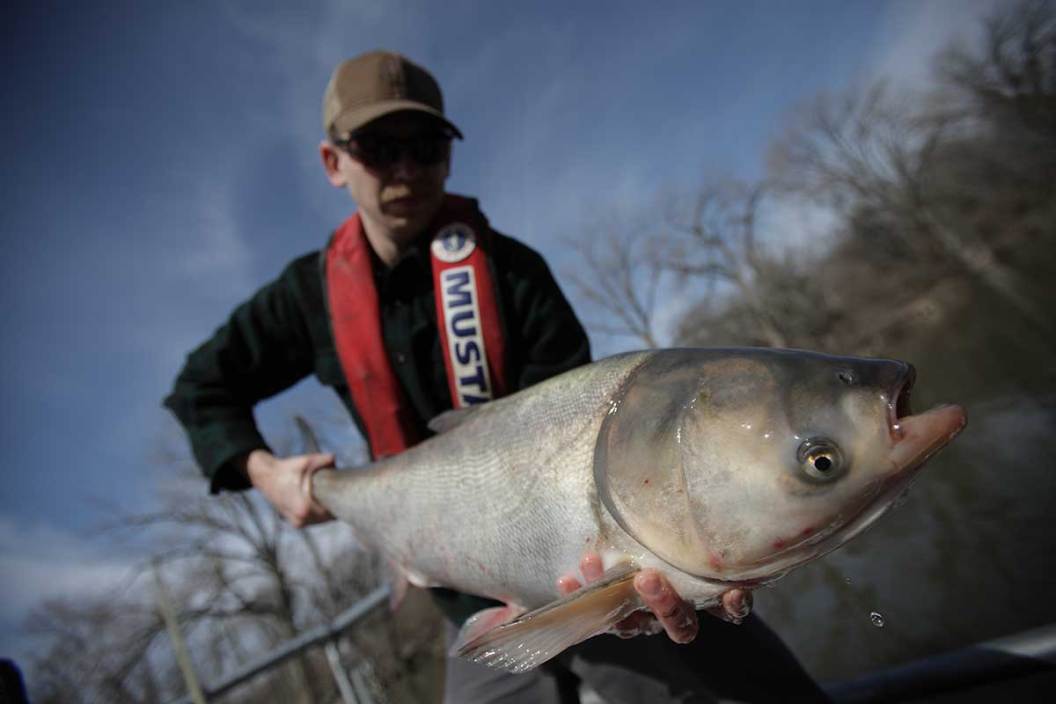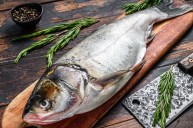Move over Asian carp, welcome copi.
In Illinois, officials have unveiled a massive rebranding campaign, complete with a brand new name for the pesky invasive fish: copi.
This latest effort to reduce populations of this fish species is led by the Illinois Department of Natural Resources, in collaboration with the Asian Carp Steering Committee (ACSC) and Southern Illinois University. All of these agencies collectively share a mission to increase human consumption of copi, formally known as Asian carp, which they call a delicious and healthy wild-caught fish that is threatening ecosystems of Midwestern waterways and the Great Lakes.
The name copi refers to the 'copious,' meaning abundant, amount of these fish plaguing Illinois waterways. Copi overpopulation is devastating to native fish species, such as perch or walleye, because they devour food sources that native fish rely on for survival.
The new name copi refers to all four species of carp in the state - Bighead carp, Silver carp, Grass carp, and Black carp.
This renaming effort follows decades of work by invasive fish experts that has had limited success. Even electric barriers have not curbed copi populations. Experts are hoping that a new name might be key in overcoming previous barriers to people's dinner plates.
"The new name and brand are designed to address public misconceptions about this delicious top-feeding fish, which is overrunning Midwest waterways," according to a Department of Natural Resources press release.
Copi were introduced in the United States in the 1970s to filter fishery retention pools in Southern states, but made it to the wild due to flooding. They then traveled up the Mississippi River. By the 1990s, the pervasive fish was widespread throughout the Illinois River, choking out native species.
According to Kevin Irons, the Illinois Department of Natural Resource's Aquatic Nuisance Species Program Manager, who in an interview with NPR, said that copi now make up some 70% of the Illinois River's total biomass. He believes that by creating a human consumption market, that ratio could be reduced to nearly 10 to 15%.
The big push now is that copi populations must be reduced in number before they threaten the Great Lakes.
"By one estimate, 20 million to 50 million pounds of copi could be harvested from the Illinois River alone each year, with hundreds of millions more in waterways from the Midwest to the Gulf Coast," according to the Department of Natural Resources.
Officials there believe that by regularly adding this wild-caught fish to meals and menus, people there can save the future of the state's waterways and ultimately, the Great Lakes.
The U.S. EPA's Great Lakes Restoration Initiative is putting $600,000 behind the rebranding effort through 2024.
"It's the starting point," said Irons. "We're going to support this effort to 2024, joining a collaborative of industries and fish eaters and restaurants and chefs."
Illinois is not the only entity to rename the Asian Carp. The US Fish and Wildlife Service rebranded the freshwater fish wreaking havoc in the Midwest as "invasive carp" in April. Minnesota dropped the term in 2014.
The name copi was chosen after extensive marketing research among consumers, scientists, and fish and food industry professionals.
The taste of copi is being described in marketing materials as "pure, light, and clean. More savory than Tilapia, cleaner tasting than Catfish, and less flaky than Cod."
In an integrated effort, restaurants across the state have rolled out copi dishes, including sliders, burgers, and po' boys. Restaurants can receive free samples of copi to test dishes or experiment, and provide customer samples.
Chefs and grocers can also purchase copi from processors, manufacturers, and distributors. Even some national distributors, including Gordon Food Service, are on-board.
This is not the first time a fish species had been renamed to make it more appealing to the masses. Orange roughy used to be called slimehead; Patagonian toothfish is now Chilean sea bass.
Stakeholders are hopeful that the rebranding effort is enough to inspire widespread harvest and consumption of copi.
"It is clear that although we cannot likely eradicate these species, harvest can prevent the spread and is one of the strongest tools we have to reduce populations of Asian carp in areas where they are dominate," Irons said. "Harvest can significantly lower densities and populations of these carp."




